AN INTRODUCTION TO WINCHESTER - PAST AND PRESENT
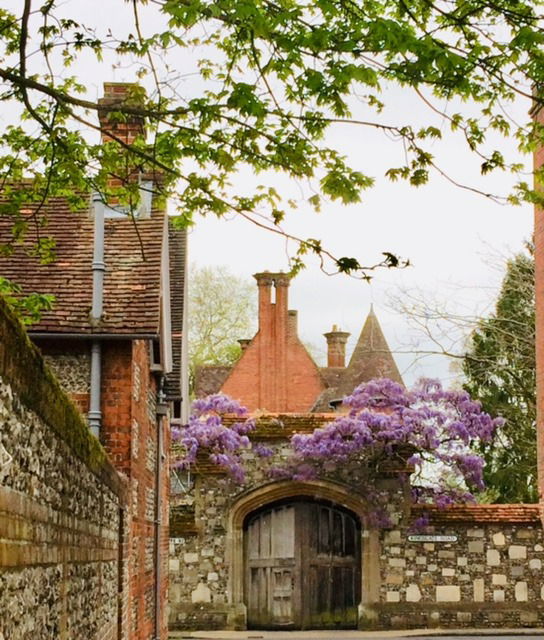
Winchester combines ancient history and modern vibrancy, encompassing a special and almost magical atmosphere. Walking around the city is a pure joy, absorbing the sheer magnificence of its heritage and modern dynamism.
The Theatre Royal hosts many famous plays and comedies with shows from Shakespear's Macbeth to Abigail's Party! The Chesil Theatre, located inside a former church that is hundreds of years old, hosts many plays and has a wonderful atmosphere. Cafés, restaurants and brasseries such as Raymond Blanc and Rik Stein's offer excellent and varied cuisine. The Cabinet Rooms has a truly special atmosphere. Traditional shops and modern retail outlets help form a unity of purpose and enterprise.

Ancient buildings and edifices adorn the city, including ruins of Henry of Blois' 900 year old Wolvesy castle, which was also served as a palace. As Bishop of Winchester, he 'commissioned the 900 year old Winchester Bible. Bishop Henry was grandson of William the Conqueror and brother of King Stephen. The castle has original, crenelated city walls. It is located close to Winchester College.
A number of half-timbered Tudor buildings grace the city where many are on the main thoroughfare. And of course the magnificent 1000 year old Winchester Cathedral. A magnet for visitors world wide.
BRIEF HISTORY
Winchester, once capital of England, retains its ancient heritage from Roman times to the present day. The Roman era from A.D. 79 to AD 420, had a significant impact on Winchester, although much evidence lies underground.
RIVER ITCHEN
The River Itchen was important to the Romans as a navigation route for importing goods from Southampton to Winchester. The River Itchen was narrowed by the Romans to address flooding and enhance cargo boats' access to the city. The Victorians further developed the Itchen to facilitate use of narrow boats for inland transportation of goods complete with locks. The Romans eventually returned to their homeland which was being invaded.
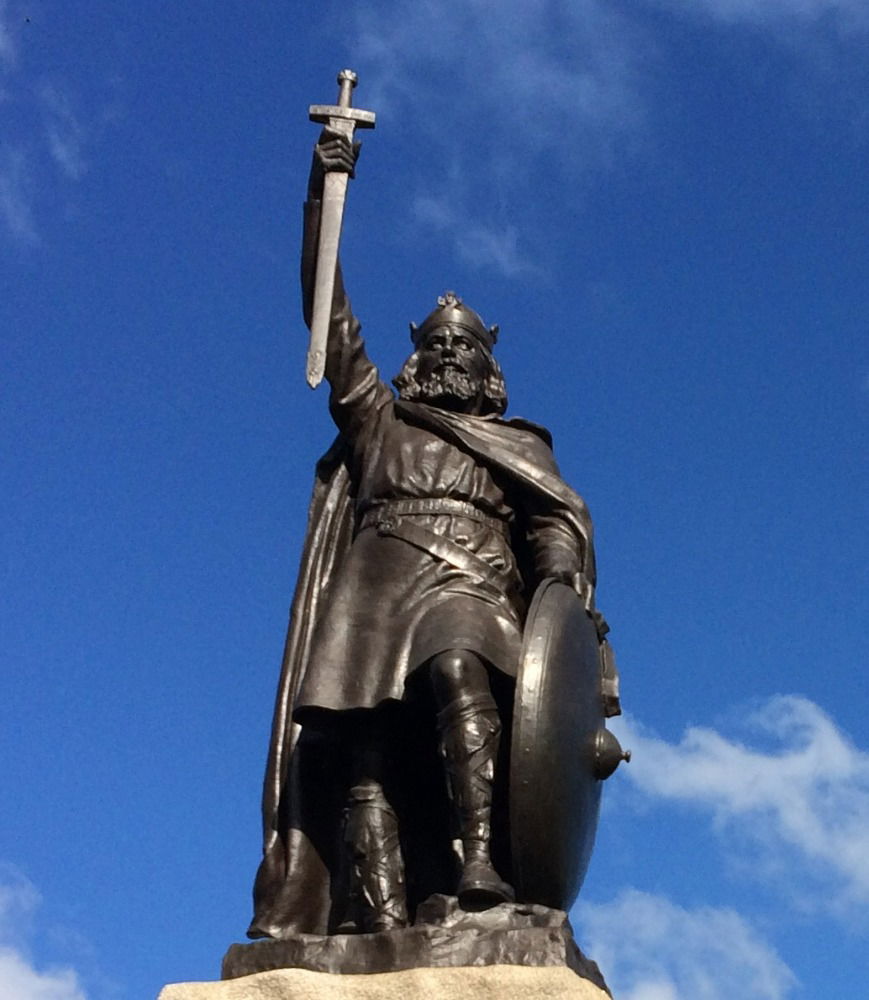
LATIN and ENGLISH
The Roman connection has never been lost where Latin is still used to this day for plant species, medical terms and phrases. Latin language prayer books in regular use to this day. Reading Latin on one page and English translation on the other, the connection becomes obvious; especially if Latin was taught at school. Vulgate Latin (Old Latin) was a language used by monks in monasteries. There are many similarities with English and Latin. For example, Orate sine intermissione (the monks prayed almost without a pause. Pro bono publico (for the public good) is another example. Also, errare humanum est (to err is human) lapsus memoriae (a slip of the memory). Some schools are reintroducing Latin enhance understanding and direct connection with English and other languages of Latin origin including Spanish, Italian of course and French. Following the Norman invasion, the language of the royal courts and upper echelons was old Norman French; another language of influence.
Following the Norman invasion, the language of the royal courts and upper echelons was old Norman French; another language of influence.
The words featured on the British coat of arms are from the Royal Order the Garter, dating back to 1348, when King Edward II acted in a most chivalrous manner when Joan, Countess of Salisbury's garter she was wearing, fell to the floor, much to the amusement of courtiers. It iis said that the king picked up the garter placed it on his leg and delivered the iconic phrase 'Honi soit qui mal y pense'. 'Shame on he who thinks evil of it'. The derivative of 'mal' being evil or malevolent. Also 'Dieu et mon Droit' (God and my right') at the bottom of the Coat of Arms.
On the gate entering the Cathedral's Inner Close there is a fine example of the Coat of Arms. Nearby is a most wonderful pub and hotel; the Wykham Arms which is highly rated by residents and visitors. A wonderful inn serving excellent food and real English ale. Its ambiance and décor is original and delightful. It's motto is Winchester College's (founded in 1382) coat of arms, 'Manners Makeyth Man' above the entrance.

ANGLO-SAXON ERA
The Anglo-Saxon era was a most significant period orchestrated by King Alfred the Great (849 - 899). The only monarch with 'Great' as his title and active in delivering a most critical changes during his reign as King of Wessex; eventually King of England. He fought the Danes, but eventually made peace enabling both to live in harmony.

Queen Emma (984 - 1053) was daughter of Richard I of Normandy and Great Aunt of William the Conqueror. Richard I 'The Fearless' awarded Queen Emma Winchester and Exeter as a wedding present on her marriage to King Aethelred the Unready. She was Queen of Denmark Norway and England.
She is the only Queen to be Queen twice. When Aethelred passed away, she married King Canute. She is the only woman to have a mortuary chest in Winchester Cathedral. Her statue is located on the Great Screen. She had had two children. Aeathelflaed and Edward the Confessor.
Her principal home was in Winchester located in wider area where the Tudor ASK Italian restaurant is located in the High Street; also worthy of a visit.
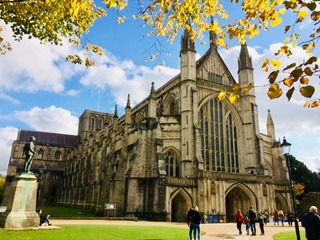
A DELIGHTFUL WALK AROUND WINCHESTER
Winchester is ranked as the second happiest place to live in the United Kingdom. Contributing factors include a sense of pride, friendliness, belonging and good 'Community Vibes'.
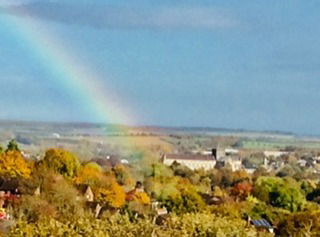
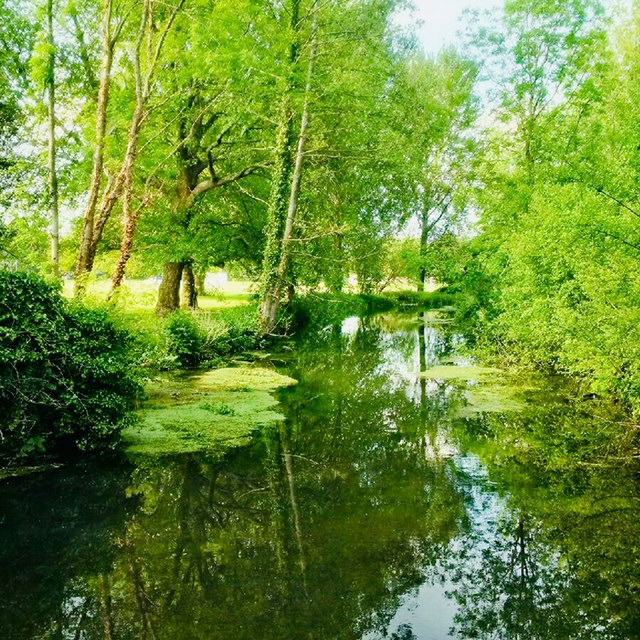
Facing King Alfred the Great's Statue, is a view of St. Giles Hill resplendent in greenery and trees can only be described as extremely beautiful. The foot of St. Giles' Hill is literally minutes from the centre. Pathways lead to the summit where a platform affords a spectacular view of Winchester. At its summit, St. Catherine's Hill can be seen which is around a twenty minute walk from the city centre. Steps to the copse offer truly spectacular views of the surrounding countryside.
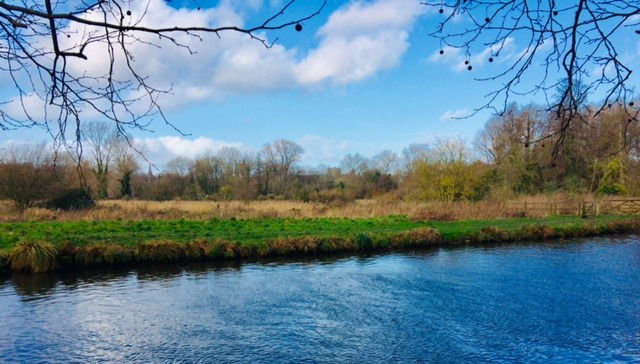
Winchester encompasses many dramatic sights generating a degree of wonder. A tangible synergy of the past and present. For example William the Conqueror's former castle offers a direct connection with the Norman Conquest of 1066. The ruins of which are mostly underground, but downward steps allowing a limited view. Next to the castle ruins is King Arthur's Round Table, exhibited in Great Hall. The nearby Westgate offers a view of the High Street as it leads down to the city centre. Pedestrianised, with Tudor buildings on either side. Wonderful half timbered examples of that era of constructional prevalence dating back Tudor times.
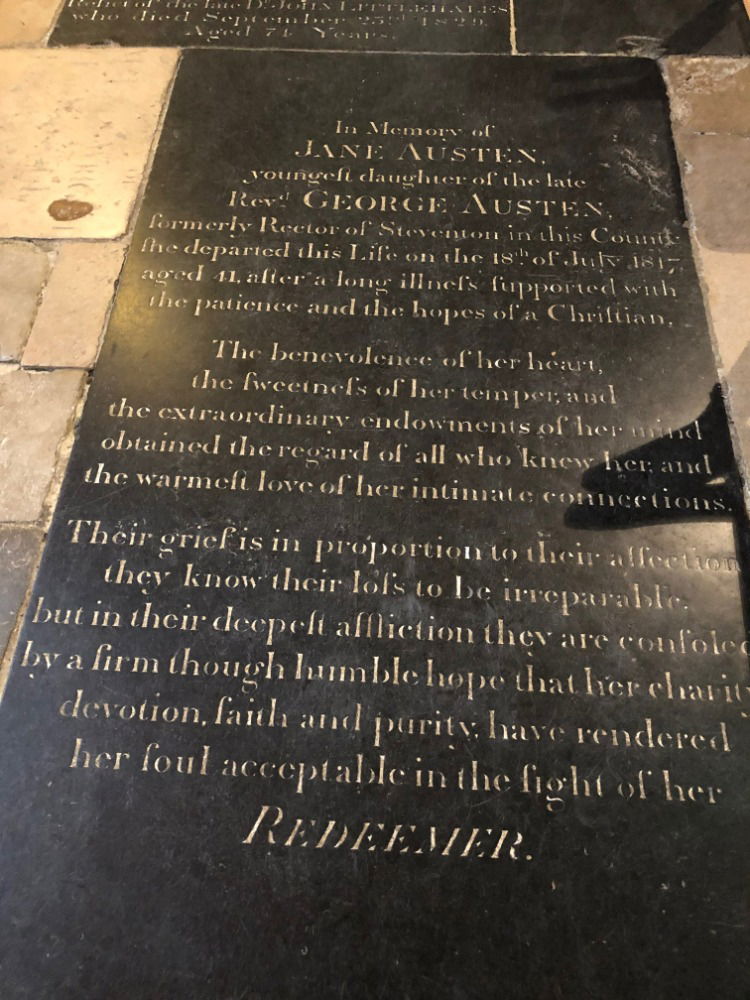
AN INTRODUCTION TO WINCHESTER - PAST AND PRESENT written by Simon Lever in association with Beauty & the Beast Publishing. Photos courtesy of Simon Lever.